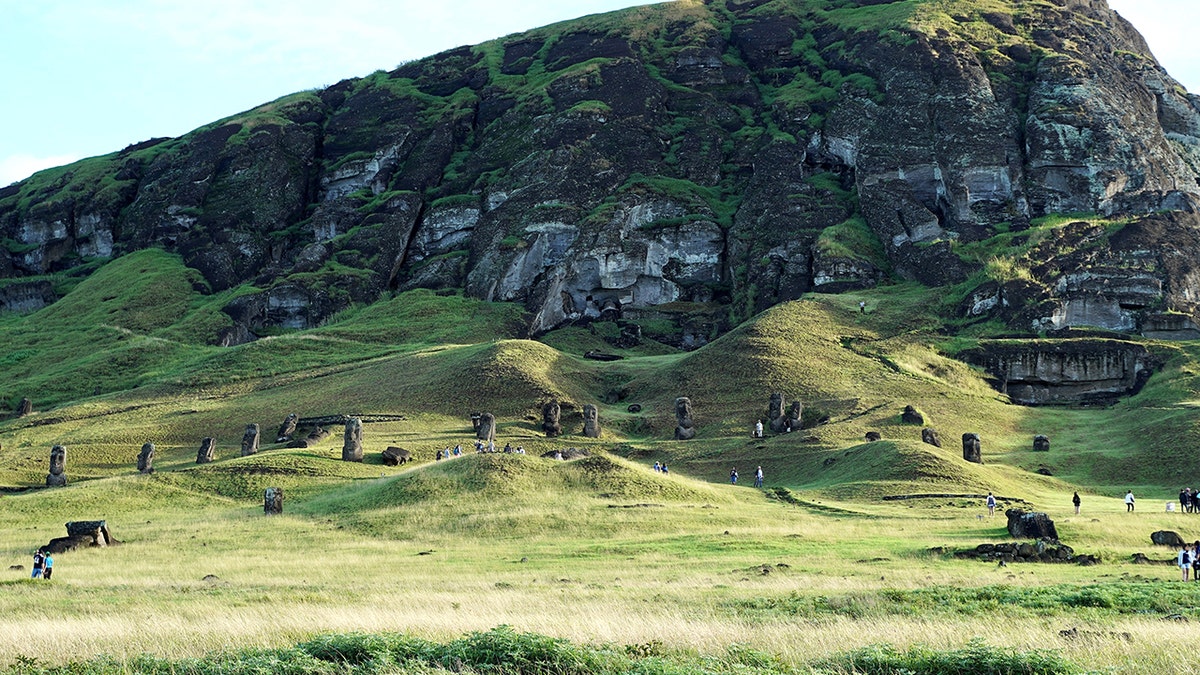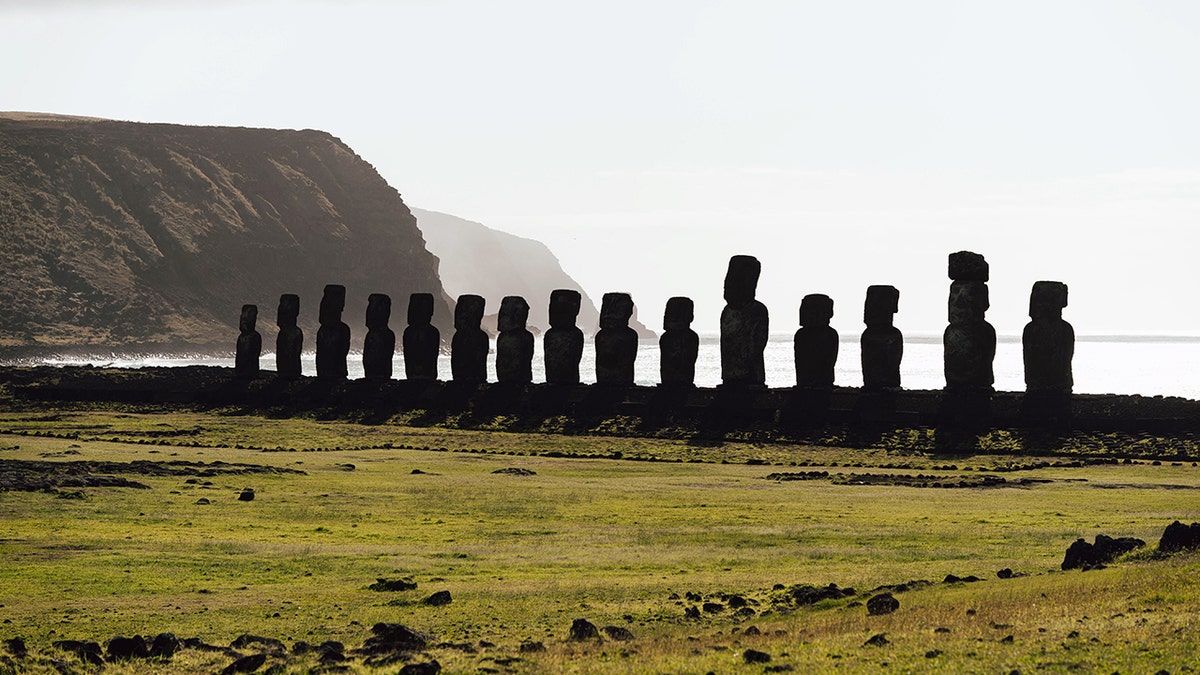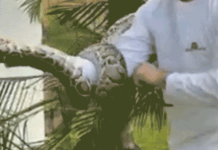NEWYou can now listen to Fox News articles!
The mystery of the Moai stone heads has eluded onlookers for centuries — and now, researchers say they finally know how they got there.
The statues, which were carved and placed on the South Pacific’s Easter Island between the 12th and 17th centuries, have puzzled travelers since the first European contact was made there in 1722.
Though the structures appear to only be heads, many of them have full bodies that have been concealed by sediment over the centuries.
CLICK HERE TO SIGN UP FOR OUR LIFESTYLE NEWSLETTER
According to Rapa Nui legend, the heads “walked” to their spots — and the new study sheds light on that foundational story.
In a study recently published in the Journal of Archaeological Science, researchers Carl P. Lipo and Terry L. Hunt argue that the heads were “walked” vertically — not horizontally — from a nearby quarry.
Researchers say Easter Island’s mysterious Moai statues were likely moved vertically, not horizontally, using a sophisticated rope system. (Andia/ Universal Images Group via Getty Images)
The scientists analyzed 962 statues to reach their conclusion. Using 3D modeling and statistical mapping, Lipo and Hunt found that the heads’ D-shaped bases and forward lean made rope transport possible.
While Lipo and Hunt first demonstrated that the Moai could “walk” in 2012, this new study is the first to prove the method with large-scale statistical and archaeological evidence.
CLICK HERE FOR MORE LIFESTYLE STORIES
“Our experiments revealed that the forward-leaning design enabled efficient transport, covering [328 feet] in 40 min with a team of 18 people—a significant improvement over earlier vertical transport attempts that used incorrectly proportioned ahu moai forms,” the study’s abstract reads.
The statues were rocked and pivoted along Easter Island roads by multiple people at a time — making the process more efficient.

Many of Easter Island’s famous heads are attached to buried torsos that have been hidden for centuries. (Zhu Yubo/Xinhua via Getty Images)
“The walking method required minimal resources and labor compared to horizontal transport hypotheses, revealing sophisticated engineering rather than environmental destruction, and aligning with Rapa Nui oral traditions that describe moai ‘walking’ from the quarry,” the authors wrote.
TEST YOURSELF WITH OUR LATEST LIFESTYLE QUIZ
The findings come as tourists continue to flock to the Polynesian island to enjoy the privacy it offers as one of the most isolated places on Earth.

The new findings portray Rapa Nui builders as skilled engineers. (Fabien Pallueau/NurPhoto via Getty Images)
To get to Easter Island, most tourists fly to Santiago, Chile, before taking a six-hour flight to the isle’s Mataveri International Airport.
CLICK HERE TO GET THE FOX NEWS APP
Spanish newspaper El Pais reported that, before the COVID-19 pandemic, the island received 156,000 yearly visitors — and $120 million in annual tourist revenue.



